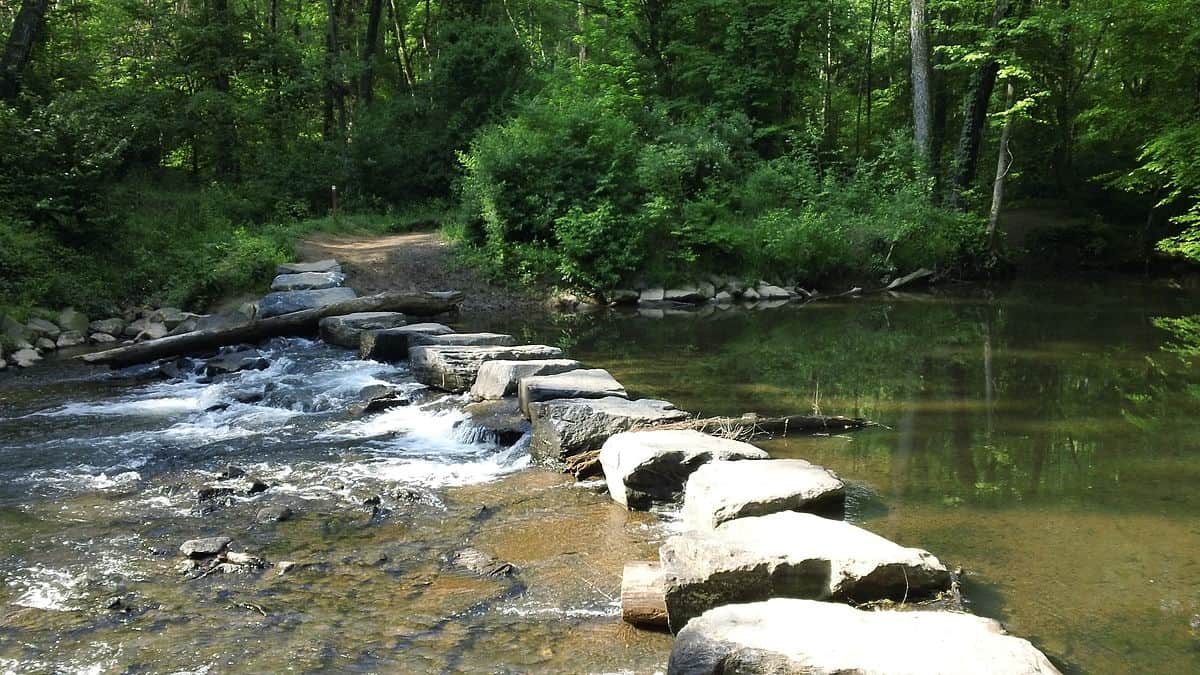So, maybe you are not fortunate to have a natural stream running through your garden. Fret not! You can turn any ditch in your yard into what appears to be similar to a natural stream. All it takes is the desire for such a thing and the drive to exploit possible opportunity to make that dream a reality.

Natural Garden Streams
The stream can have several plants on one or both sides and thus the need to ensure the water flows continuously even during the dry summer weather. It is an issue that takes precedence when it comes to working with a ditch that has water flowing freely during winter and spring. Given the seasonal nature of these features, careful handling is paramount when creating a natural looking stream, And that calls for engineering your planting to help with achieving the objective
Ideally, the goal is to have a stream that runs throughout the year and throwing in some decorative touches such as a shingle bed, or natural Waterstones can help enhance the presentation provided by the waterside plants. You might even consider adding aquatic species directly in the stream! A few minor adjustments may also help improve
In as much as you have a stream in your garden, bear in mind that it is a partial ownership that
you need to have this matter at the back of your mind as you alter the stream’s flow since it can affect it upstream and downstream. In light to that, consult with your neighbors and the rivers authorities in your area to ensure everyone is okay with your plans. Such measures will be essential especially if you plan to install a pond or backwater off the stream even though
The Artificial Stream
If nature did not bless your yard with a stream, then create it yourself. You can use the same methods used when constructing a pond or pool. Unlike with the natural stream, the artificial one gives you complete autonomy of the water which you achieve by installing a water recirculation feature. Visually, you will be at a disadvantage when it comes to where the stream starts or ends, but that is a matter of perspective. What matters is the layout and pristine imitation of a natural flowing water thus plotting the streams route from its start to end should give a meticulous result to ensure it integrates with the garden’s landscape naturally
With an artificial stream, you can dictate the direction you want the water to flow as you account for the various planting niches you wish to create. The catalyst for a stream can be an
A Lined Stream
A lined stream presents a flexible construction method with accurate excavation for optimal disguising or exposure depending on the desired effects. Adding some rocks into the edge and variously sized pebbles at the bed will give a meticulous presentation. The fall, however,
should be at an angle of no more than 30 degrees for the stream to have the desired natural flow
With liner water stream features, the removal of any sharp objects that can puncture the material is necessary. After that, builder’s sand is poured and spread along the bed and up the sides. A fleece underlay can as well be added since it is not complicated to install.
For short streams, a single length of the liner is not hard to obtain. However, cases of variations in the arcs, curves, and level of the stream, several separate sheets will be necessary and the easiest option for the best results. The sheets should be laid from the pool hack with generous overlaps directing then towards the source of the stream’s flow. If possible, the laying down of the sheets can be done to create a few shallow drops where possible to make the end of the liner’s downstream section to be slightly above the water level
Secure the edges of the liner with soil and rocks ensuring it continuously remains higher than the stream when it as a maximum water level. By doing this, you prevent cases of seepage into the surrounding ground. Hessian bags filled with soil can also be used for the edging, which can also be done using sandbags, on which you can grow some waterside plants
A linear stream is what to consider if you are looking for something that will give you an array of creative design opportunity as. And you can achieve various effects by modifying the flow of
1. Excavate the ground to achieve the desired size and line, remove sharp objects that may
2. Carefully lay the liner with ample overlap at the edges and arcs as you smoothen out wrinkles
3. Use bags of soil to accentuate the edges of the stream to avoid overflow of the water and

